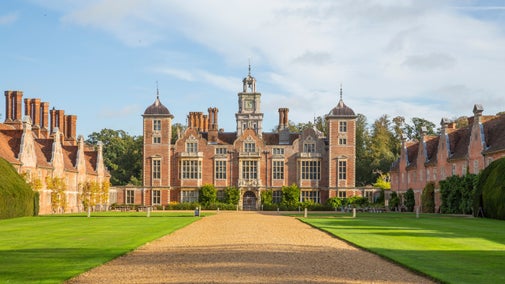
Immerse yourself in history
Meet people from the centuries gone by, learn about the unique artworks in our care and understand more about historic traditions.

The term Egyptomania, from the Greek Egypto (Egypt) and mania (madness, fury), refers to the enthusiasm for everything related to ancient Egypt. This interest is not just scientific, and Egyptian and Egyptianising motifs have been adopted throughout visual culture including architecture, clothing and jewellery. Although Egyptomania has been seen in many places and at many times, several peaks are especially noteworthy.
Greeks and Romans were fascinated by ancient Egypt, as demonstrated in texts such as Herodotus’ Histories in the fifth century BC, and the Bibliotheca Historica by Diodorus Siculus in the early first century BC.
After Emperor Augustus conquered Egypt in 31 BC, Eyptomania arrived in Rome. The high official Caius Cestius, for instance, erected a pyramid shaped tomb (18–12 BC). Emperor Hadrian (AD 76–138), who visited Egypt himself in AD 130, had his deceased lover Antinous venerated as Osiris, the Egyptian god of the underworld.
After Napoleon Bonaparte's campaign to Egypt from 1798 to 1801, a new wave of Egyptomania hit Europe. This was largely due to the many scientists that accompanied him and recorded the remains of ancient Egyptian monuments. Such thorough documentation had never been undertaken before.
In 1822, Jean-François Champollion deciphered the hieroglyphs using the Rosetta Stone which Napoleon’s troupes had found in 1799. This was the beginning of scientific Egyptology.
When Howard Carter and Lord Carnarvon discovered the tomb of Pharaoh Tutankhamun in 1922, ancient Egypt took the world by storm once again. It was not only the find itself that ignited public curiosity, but also the tale of the mummy’s curse, which supposedly killed Lord Carnarvon in 1923.
As Tutankhamun’s burial equipment has been regularly exhibited in museums across the world since the 1960s, Tutmania is arguably still alive today.
During the heights of Egyptomania few people could afford to travel to Egypt in person. The only contact they had with Egypt was therefore through literature, art and architecture, and it became representative of exoticism, romance, and mysticism.
Moreover, popular tales about Egypt mostly circulate around the search for immortality and eternal love, reflecting people’s innermost desires. Egyptomania therefore expresses these longings in a visual way through obelisks, sphinxes, pyramids, and all sorts of other collectables.
Kingston Lacy, home of the explorer and Egyptologist William John Bankes (1786–1855), houses a fascinating Egyptian collection which Bankes collected on his extensive travels. The centrepiece is the obelisk from the Philae island, standing in the estate’s gardens since 1827.

In the grounds of Blickling Estate stands the mausoleum pyramid of John Hobart (1728–1793), the second Earl of Buckinghamshire. This pyramid was designed by Joseph Bonomi the Elder (1739–1808) and was based on the pyramid-shaped tomb of Caius Cestius in Rome.
The horticulturist James Bateman (1811–1897) divided his garden into different themes with the help of Edward William Cooke (1811–1880). One of these garden divisions is Egyptian themed and boasts a tomb and sphinxes.
Manon Schutz is an Associate Faculty Member at the University of Oxford. Her main area of research is the funerary culture of ancient Egypt, especially the use and meaning of beds inside tombs, as well as the multiculturalism observed in the Roman Period of Egypt.

Meet people from the centuries gone by, learn about the unique artworks in our care and understand more about historic traditions.

A hub for multi-disciplinary research projects and research engagement at the University of Oxford
Find out more about our Trusted Source articles, which were created in partnership with the University of Oxford, and explore topics related to the special places in our care.

Mentioned in the Domesday Book, the estate was the birthplace of Anne Boleyn, and during the Second World War RAF air crew were billeted here.

Learn about some of the prized items that are housed at Kingston Lacy, several of which feature in the National Trust's book 125 Treasures.

Learn about the ancient treasure that unlocked the secrets of Egyptian hieroglyphs in our podcast episode, 'The needle on the lawn'. You can also find more episodes from series eight, filled with nature and history.
